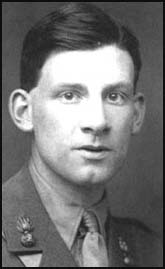Today, our class looked at how to analyse one word quotes in detail, using a ‘graphic organiser’ like this:


This allowed us to ‘pull apart’ the quote and really think of some insightful and perceptive comments to say about it:
Example 1: ‘Toddle’
The word ‘toddle’ could have several meanings. Firstly, the poet could be using it to show what he thinks of the major’s role in the war, as that he sees the majors are treated like children; they stay behind safe away from the war while the ‘men’ are fighting. Secondly, it could suggest the major acts like a child, as he doesn’t seem to care what’s going on and doesn’t take it seriously – sees it as a game, showing his childish behaviour. Furthermore, it seems as if the poet is mocking the major, again linking him to being like a child; he still needs to be taken care of and that is why he is behind the scene of the fight and doesn’t really do anything but ‘toddle to bed’.
Example 2: ‘Scrap’
In the poem, the poet uses the word ‘scrap’ to describe a battle. This tells us many things about the poet and the soldiers in the battle. Firstly, it tells us that the soldiers are viewed by the major as scrap materials, to be discarded on the battle field (the scrap yard) along with other pieces of scrap (other soldiers). Secondly, the poet hints at the idea of the major trading in the soldiers to earn his wage, sort of selling used and scrap metal in the yard. Furthermore, it could suggest that the soldiers are just spare parts and are easily replaced. On the other hand, it could be used to describe a fight, similar to two kids in a playground, and not a big combat battle where many lives are lost. Overall, it gives the impression that the major sees the battle as unimportant and pointless, whilst the soldiers’ lives are meaningless.
Both of these examples explore alternative interpretations and ideas – using only one word. It is far more effective to explore ALL of the ideas a one-word quote can give, rather than write one sentence about many quotes.
TIPS:
- Try using the graphic organiser above to break down quotes into different ideas
- Use different connectives (firstly, secondly, furthermore, in addition, overall etc.) to structure your explanation clearly
If you missed this lesson, the powerpoint can be downloaded here:
L3 PEE Base Details













